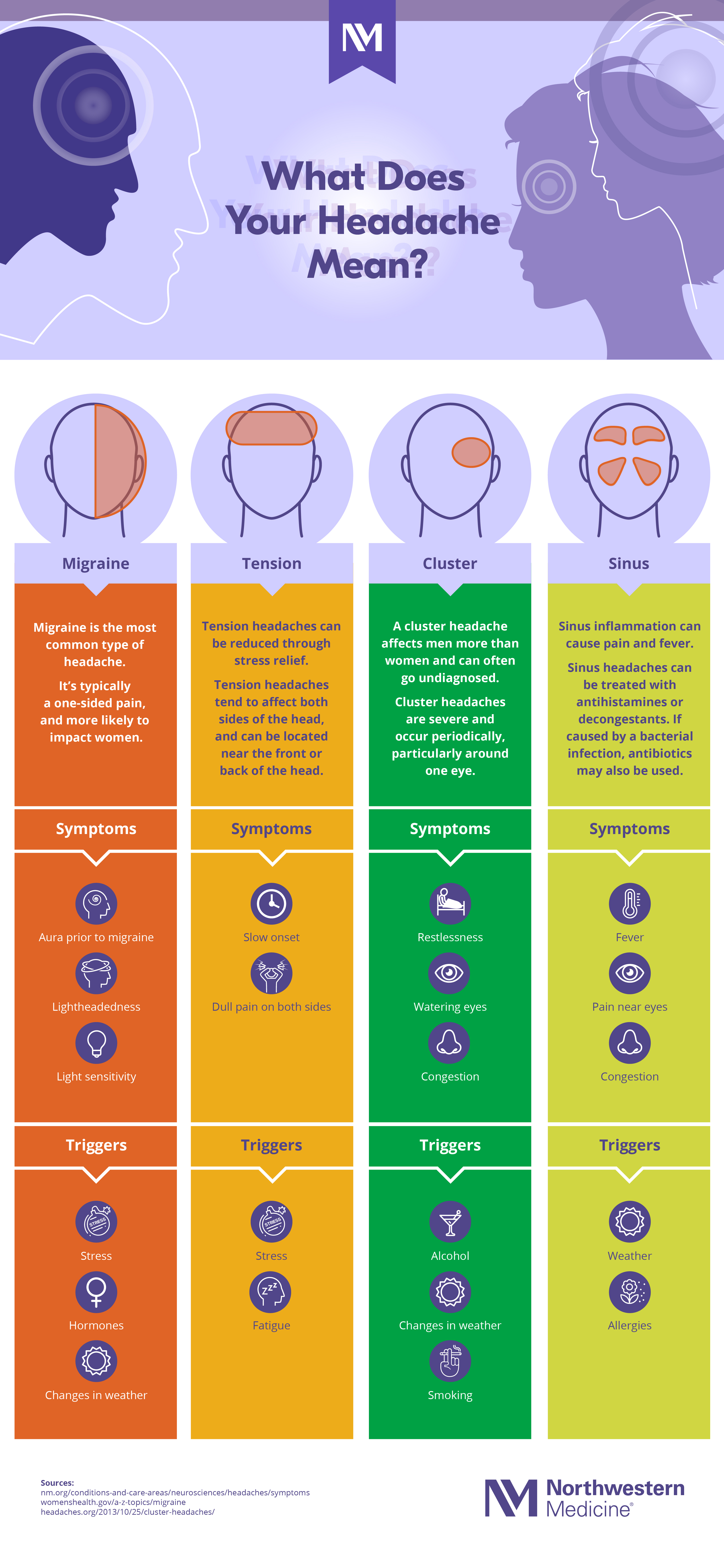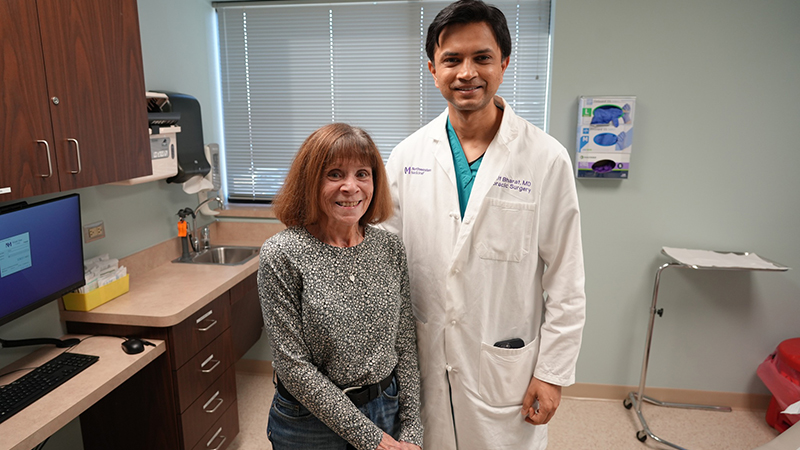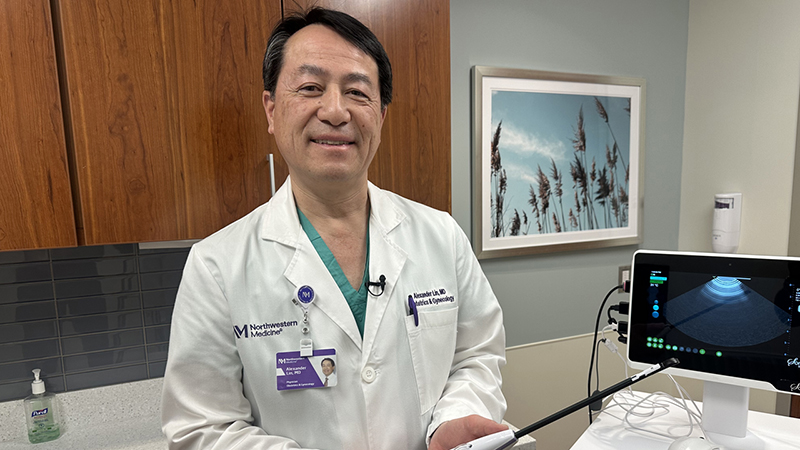Headache Types Explained (Infographic)
Published June 2020
Your Guide to Treatment and Prevention
Although there are many different types of headaches, certain features may help determine the best approach for treatment and prevention.
“There are different types of headaches, and each one has its unique causes and symptoms. Generally speaking, certain headaches are more likely to cause certain types of pain,” says Northwestern Medicine Neurologist Katherine S. Carroll, MD. She suggests using a journal to keep track of your headaches, including the type of pain and triggers such as the weather, caffeine or food.
Types and Treatments
Treating headaches starts with a proper diagnosis and learning to avoid triggers.
Individuals who experience migraines may use a “rescue medication,” such as a non-steroidal anti-inflammatory drug (NSAID) or a migraine specific rescue medication.
Although these treatments may bring relief, migraine prevention is also important if you have frequent migraines. Medications like calcitonin gene-related peptide (CGRP) blockers, antidepressants, blood pressure medications, anti-seizure medications or botulinum toxin (Botox®) injections can be effective options for some people.
A cluster headache affects men more than women and can often go undiagnosed. “This is a unique headache, as it is often accompanied with a lot of autonomic features, like red, watery eyes, congestion or running of the nose, or drooping of the eyelid,” explains Dr. Carroll. Although this type of headache typically lasts for a relatively shorter period of time, it can be extremely painful and debilitating. The mainstay of treatment for cluster headaches includes calcium channel blockers for prevention, oxygen and/or triptan medications for rescue.
For tension headaches, the main priority is trying to relax. You may find relief by correcting posture, reducing eye strain or addressing the underlying cause of your tension. Meditation and other positive lifestyle modifications are important.
Sinus headaches can occur when your sinuses are inflamed. Pain is commonly accompanied by a fever. Sinus headaches resulting from a bacterial infection may be treated with antibiotics. Antihistamines or decongestants may also bring relief. While a neurologist is well suited to treat the previously mentioned headaches, sinus headaches can be treated by a primary care provider or an ear, nose and throat (ENT) specialist, also called an otolaryngologist.
The bottom line: Help is available. “It is upsetting to see individuals go without a diagnosis or treatment plan for recurring headaches, because there are so many options available to them,” says Dr. Carroll. “It’s such an exciting time to be able to offer so many new and different treatment approaches to help our patients.”







